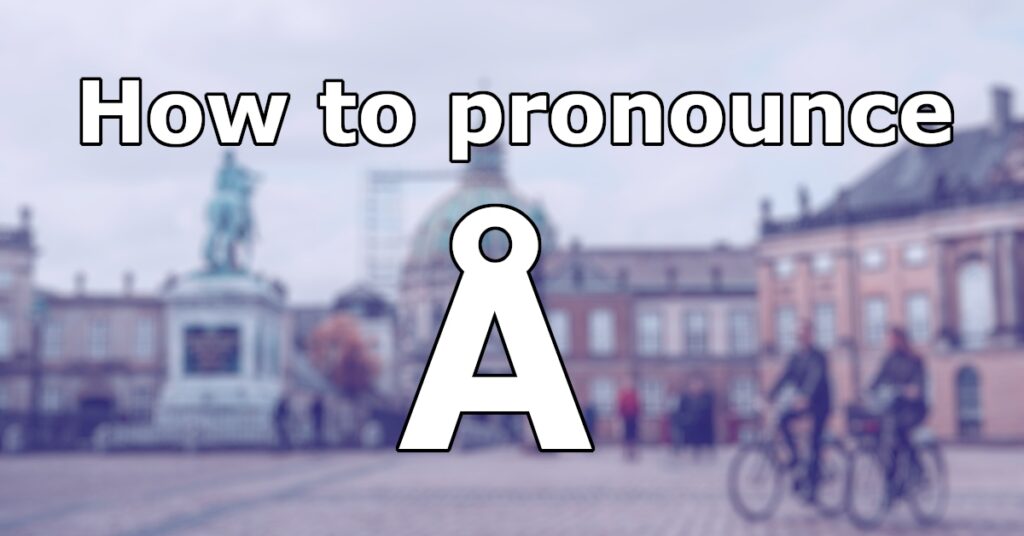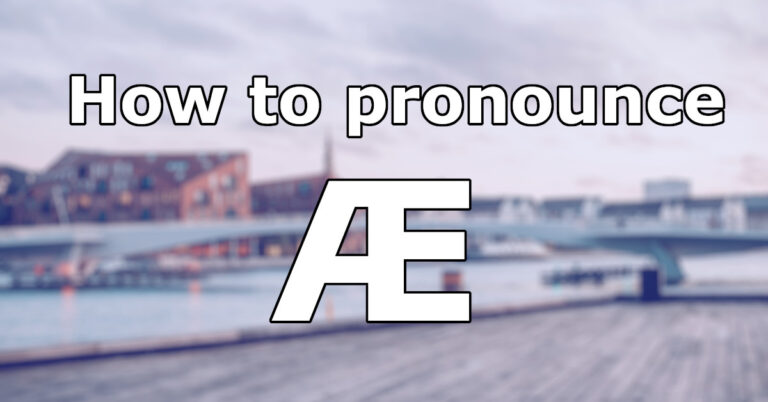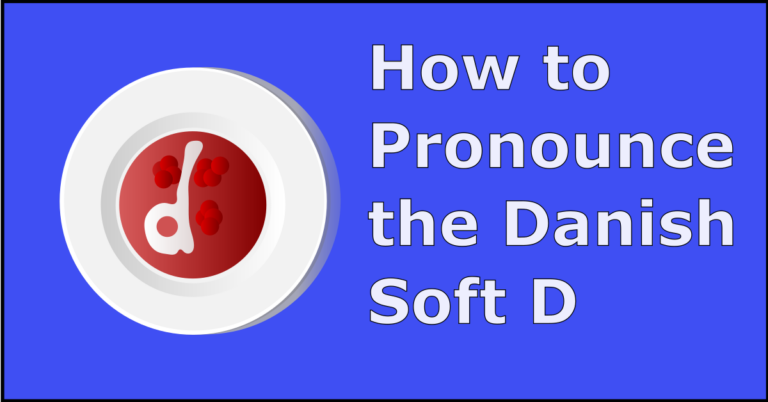How to pronounce Å in Danish

One of the ‘new’ vowels that you will find in Danish, learning to pronounce ‘Å’ will help take your language to the next level, from being able to pronounce place names like Århus and Ågade, to improving your listening skills by being able to differentiate the Danish vowels.
The fastest way to pick up new vowel sounds is to understand how vowel sounds are made. Check out this intro to vowels for an overview of how we make vowel sounds in any language.
As we learn how to pronounce Å in Danish, it is important to remember that written language doesn’t always correspond to spoken language. Just think of the words “tomb” and “bomb” in English – the vowels are the same but the pronunciation is different.
In the same way, the letter Å in Danish can actually represent a few different sounds. Linguists call these sounds phonemes, and use a different alphabet to represent them. The main sounds associated with the letter Å in Danish are the phonemes /ɔ/ and /ʌ/.
Let’s look at how to pronounce it.
The Å Sound
As outlined here, there are 3 things that we do to make different vowel sounds. They are: the position of our tongue (front to back), the position of our jaw (close to open) and the shape of our lips (rounded or unrounded). Let’s take these individually and see where the ø sound fits in.
1. TONGUE. Some sounds are called front sounds because our tongue is at the front of our mouth (eg. the /i/ sound in the word ‘free’) whereas other sounds are called back sounds as the tongue is in the back of the mouth (eg. the /u/ sound of boot). The /ɔ/ sound is a back sound, so our tongue is at the front of our mouth.
2. JAW. Some sounds are called close because our mouth is almost closed (eg. the /i/ sound of free). Some sounds are called open because our mouth is more open (eg. the /a/ sound of ‘bat’). Another way to think about this is the position of the tongue (higher for /i/ and lower for /a/). The /ɔ/ sound is called ‘mid’, meaning that the mouth is neither fully closed or opened; the tongue is in the middle.
3. LIPS. Some sounds are called unrounded because the lips are relaxed (eg. the /i/ of ‘free). Some sounds are called rounded because the lips are pouted and taut (eg. the /u/ of boot). ɔ is a rounded sound, so the lips need to be rounded and tensed.
The vowel diagram below is a representation of a mouth. Imagine it as a side view of a face looking to the left. The letters on the left hand side are with the tongue at the front of the mouth, the letters on the right hand side are with the tongue at the back of the mouth. The letters at the top are with the jaw closed and at the bottom with the jaw open. Letters written on the left of the line are unrounded, and on the right are rounded.

So we can see that the ɔ sound is at the back of the mouth, with the jaw fairly open, and with the lips rounded.
Å in different contexts
The Å sound described above appears in many words with the letter å, such as måned and åben.
At other times, the vowel sounds a little shorter, as in the word måske.
It can also be combined with the glottal stop, as in gå.
At other times, the sound becomes the unrounded, slightly lower ʌ. In this case all we need to do is unround the lips and relax the tongue slightly. This occurs in words such as blåbær and sådan.
There you have it – everything you need to get started on mastering the å in Danish. As with all pronunciation practice, it’s important to remember that it is more like physical training, than simply learning a new concept. Practise a little bit everyday, listen attentively to a lot of Danish, and within no time, the sound will become second nature to you.






